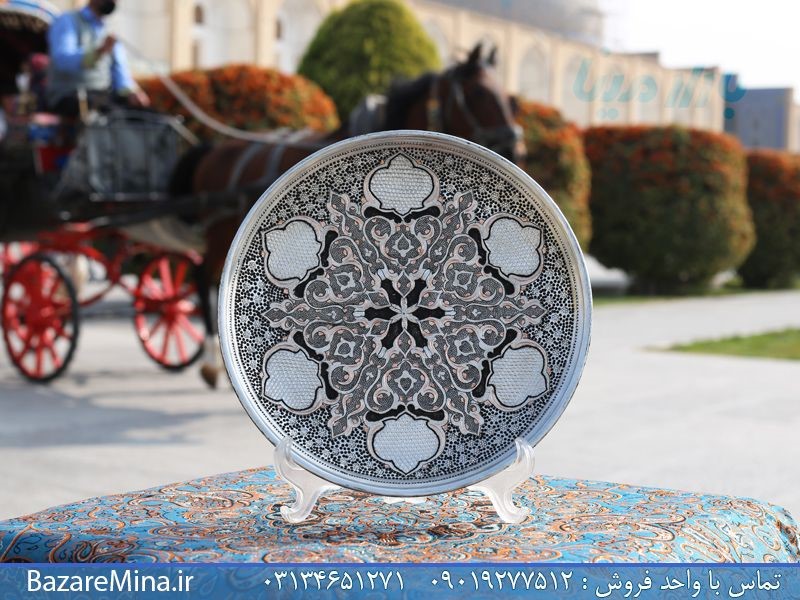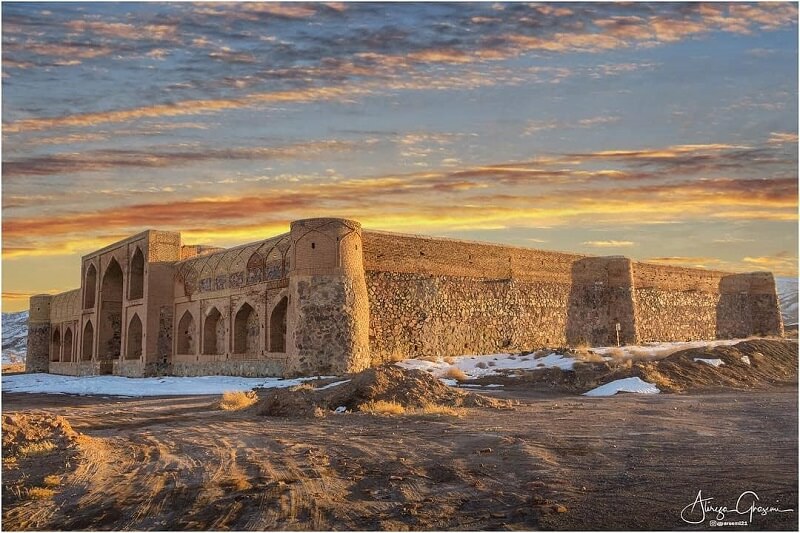
The term Persian Caravansary in the Middle East refers to hostels or inns in a large space, which are several thousand years old. These spaces were built in the past for the convenience of caravans (groups of travelers). The travelers stop in this type of guesthouses (inns) to spend the night, which have often a large yard.
The history of caravansaries dates back to the pre-Islamic Iran era, and especially the Achaemenid period (more than two thousand five hundred years ago). The caravansaries were built along important inter-city routes within the distance that the caravan could travel in one day. Some caravansaries were also built inside the cities to accommodate travelers.
The construction of caravansaries has been a vital and necessary issue due to the relative drought of the climate in Iran and the remoteness of cities and settlements from each other. Traveling and connection between different regions of the country would have been impossible without these stations. “Tim” or “Great Caravansary” is the largest type of Iranian building.
It is interesting to know that the plan of the Persian caravansary is usually square or rectangular. The entrance of these buildings is prominent, huge, and high to be seen from a far distance. The entrances (gates) are usually simple and without patterns. Some windcatchers have been sometimes embedded at the end of the walls. A corridor with a segmental arch is placed between the entrance and the inner courtyard to provide enough space to accommodate the pack animals.
Some arcades are placed on a raised platform that has surrounded the courtyard. These arcades articulate the interior view. Small rooms have been built behind them to accommodate passengers. The lower rooms in the two-story caravansaries were used to store goods and the upper rooms were used to house passengers.
The Thriving Period of the Persian Caravansary inside Iran
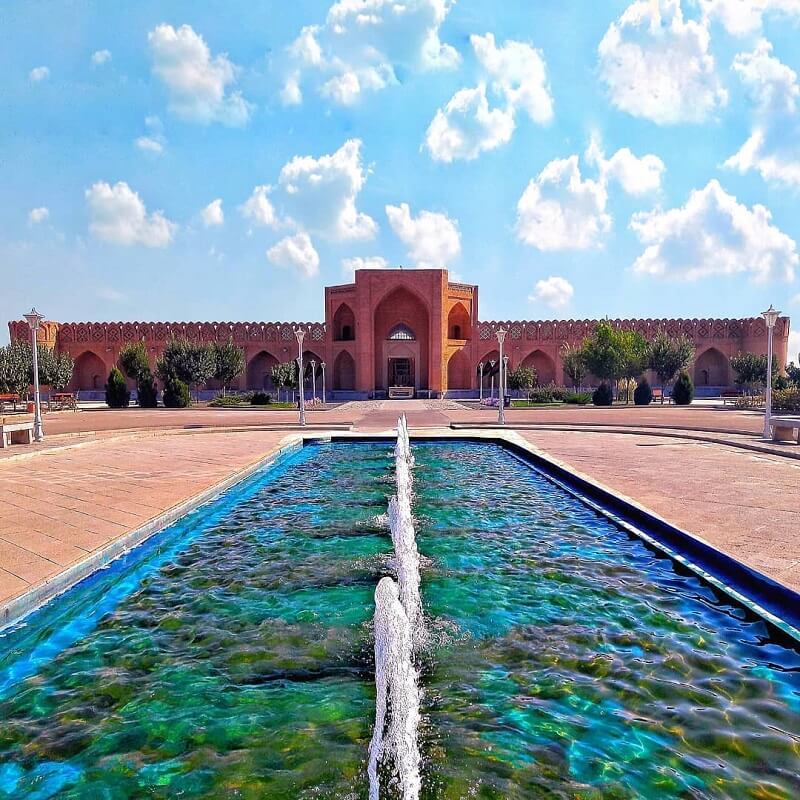
The Safavid period can be considered the most prosperous period of construction and restoration of caravansaries. It was during this period that Shah Abbas I of Persia wisely decided to rebuild and revive the Silk Road. He believed that the revival of caravansaries would be one of the requirements of this work.
On the other hand, researchers consider this issue one of the reasons that the caravansaries are mostly known as Shah Abbasi caravansaries although some of the reconstructed caravansaries could have been built before the Safavid era. The Shah Abbasi caravansary in Karaj is one of the examples of Persian Caravansary created during the Safavid period, which has been built during the reign of Shah Suleiman, the Safavid king preceding Shah Abbas I.
The Artistic Importance and Social Impact of Persian Caravansaries
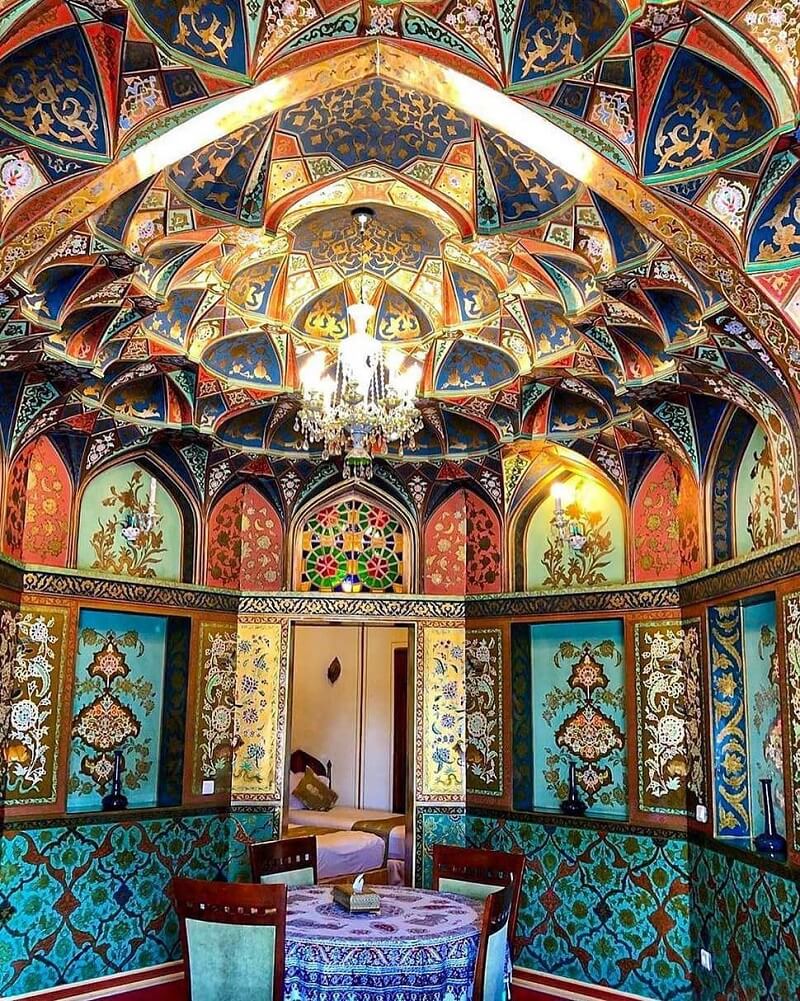
Many researchers and architectural experts have recognized the Persian (Iranian) caravansary as the most important sign of the victory and success of Iranian architecture. They have also considered Iranian masters as innovators and pioneers in creating such buildings.
Besides artistic value, Persian Caravansaries have highly mattered from the perspective of social subjects as well. Cultural, economic, and social exchanges have taken place in these caravansaries. Many political and governmental changes have also depended on the presence of caravansaries in a region.
Over the centuries, the inner-city and suburban caravansaries (inns) were considered to be docks and resorts for caravans and travelers. However, the same spaces were the place of expression and interaction of ideas. Many different tribes and nations expressed and exchanged customs in these places.
This contact and intersection of travelers and their various ideas have undoubtedly had a tremendous impact on the lives of the people of our ancient land.
Following the Industrial Revolution and emerging of motor transportation in different countries, caravansaries also lost their original prosperity. Many of them remained empty, abandoned, and gradually began to ruin. The use of some Persian Caravansary buildings was also changed and they were changed to be used as stables, parking lots, warehouses, etc.
Unfortunately, there was never a professional attitude toward these buildings to regard them as the valuable cultural and social heritage of Iran and the world.
The Importance of the Persian Caravansary in Iranian Poetry and Literature
In the realm of Persian literature, many poets and great literary dignitaries have likened the world in some cases to a caravansary and humans to a caravan. In addition, many uses of such buildings or their equivalents can be found in Persian poetry. This issue indicates the importance of the Persian caravansary during its time of prosperity.
While traveling from Nain to Tabas, Nasir Khusraw writes: “We reached the Zubaida Robat, which had an Ab anbar (water reservoir). Without this caravansary and water, none of us would have been able to cross the desert”.
The Functional and Structural Diversity of Different Types of Caravansaries
The caravansaries fall into various categories in terms of the scope of performance. Some other terms that are related or similar to them are Caravankhaneh, Carvangah, etc.
On the other hand, the caravansary was also called Sara, Timcheh, Passage, Robat, Sabat, and Khan. However, some are inconsistent with the caravansary in terms of architectural features.
• Robat
The buildings known as “Robat” are structures that were built along the road for resting, accommodation, and dwelling of caravans and convoys and had several rooms and stables. In fact, the caravansaries that were mostly used to keep horses and livestock were called Robat.
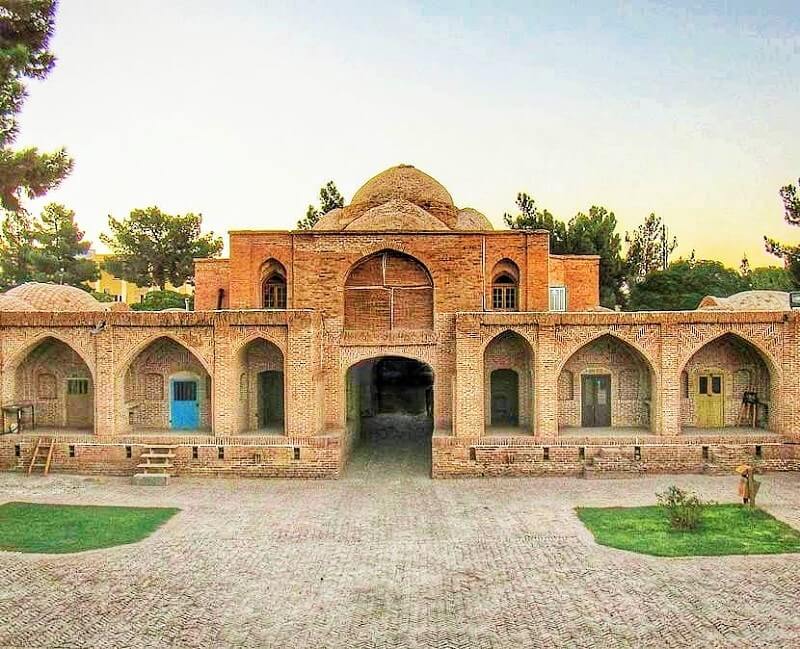
To complete this comparison, we need to add that the “caravansaries” mostly belonged to the aristocracy and government classes.
• Sabat
In addition to Robats and caravansaries, there was another type of these identical buildings, which was called “Sabat”. Sabat has been originally a shade structure or a wind shade (a barrier in the direction of the wind).
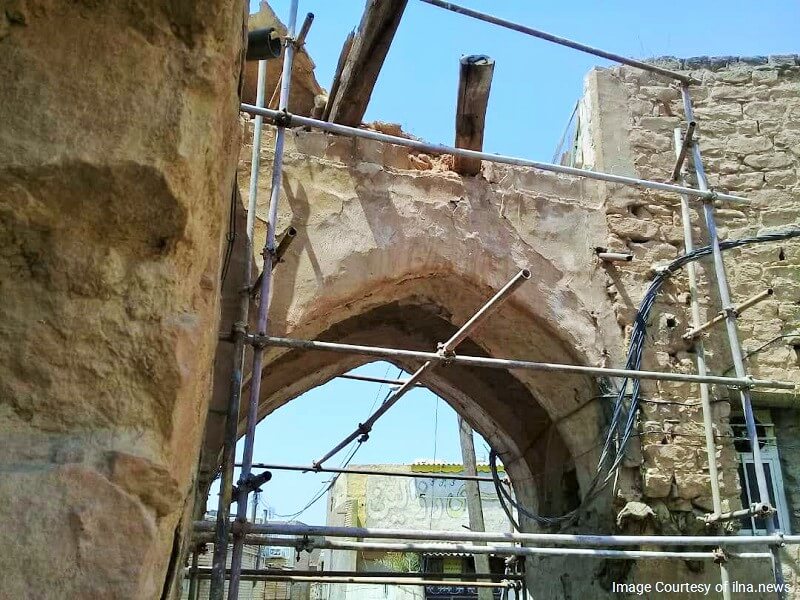
Sabats were built on the roads for short-term resting for a few hours and mostly to rest during the day. Sabat, on the other hand, was a building that has had only an arch or eyvan without a door or shelter. Therefore, some of the Sabats were just shade structures. Some Sabats have also had ab anbars (water reservoirs).
• Tim
The term was referred to the Persian caravansary buildings that were large caravansaries. The Tims had full spaces with plenty of facilities to host travelers. There were generally bakeries, butcheries, mills, prayer halls, and a series of shops to buy and sell caravan goods inside the Tims to meet the requirements of travelers.
The architects built a wall stove or a place to light a fire in rooms or the covered places in many Tims, especially from the Safavid period onwards. In the outdoor areas of the rooms, high stoves were made in the stables to keep the animals warm, which have often been located behind the walls of the travelers’ rooms.
In view of the abovementioned, one may say that the Persian Caravansary has been a complete set of functions required by travelers.
The Variety of Caravansaries in Terms of Location
In general, caravansaries can be divided into two main categories in terms of location:
- Inner city caravansaries
- Suburban or outlying caravansaries
The Variety of Caravansaries in Terms of Climate
Since most of the remaining caravansaries in Iran have been built during the Safavid period and after, we need to consider all factors in their classification from the climate status to the regional architectural style.
First of all, Iranian caravansaries can be divided into the following groups:
- Fully covered caravansaries in the mountainous area
- Caravansaries of the low shores of the Persian Gulf
- Caravansaries with courtyards in the central regions of Iran
The Variety of Caravansaries in Terms of Plan
These buildings have the following diversity from the perspective of the plan:
• Circular Caravansaries
A small number of caravansaries in Iran have been built with a circular plan. These Persian caravansary buildings are highly remarkable visually and so important architecturally.
• Polygonal Caravansaries with Courtyards
Iranian architects have built most of these structures in the shape of octagons. The period during which these polygonal buildings had been built was a time when these architectures had accomplished considerable progress.
They are as few as their circular counterparts. Some beautiful examples of this group are Aminabad Caravansary, Khan Khoreh Caravansary, Chahar Abadeh Caravansary, and Deh Bid Caravansary of Isfahan-Shiraz road, and the Benaroyeh Caravansary of Jahrom-Lar road.
The mentioned monuments have been all built with an octagonal plan during the Safavid period. This method of construction reflects the style of Isfahani architecture.
• The Two-Eyvan Caravansaries
Some Persian caravansaries in Iran have been constructed in two-iwan form with square or rectangular plans like schools, mosques, and other religious buildings. In general, one of their iwans was located at the entrance and the other in front of it. Some examples of these buildings that are still standing today are Khoshab Caravansary, Do Kouhak Caravansary, and Maranjab Caravansary.
• Caravansaries with a Columned Hall
Iranian architects have built some of these structures with columned halls, most of which were used as stables. Some of them are Asgarabad caravansary on the Tehran-Qom road and Khatunabad Caravansary, 25 km from Tehran, on the Garmsar-Tehran road.
• Caravansaries with a Four-Iwan Plan
Iranian architects used the four-iwan plan in the post-Islam Iran period for religious and non-religious foundations such as schools, tombs, mosques, and caravansaries. Over time, this design became a fixed plan for the construction of similar buildings. one can say that Iranian architects, especially since the Seljuk period, built many Persian caravansaries with a four-iwan design.
This type of caravansary can be seen throughout Iran in terms of geographical distribution. A very prominent example of this category can be seen near Qom in the Deyr-e Gachin Caravansary.
• Caravansaries with Different Designs
This group includes part of the Persian caravansaries whose design and architecture are not similar to what was introduced in the above cases. Two examples of this group can be seen in Sabzevar Caravansary and Shah Abbasi Caravansary in Jolfa.
The Most Prominent Examples of Persian Caravansaries in Iran
Some examples of this kind of Persian caravansary are introduced below.
• Robat Sharaf
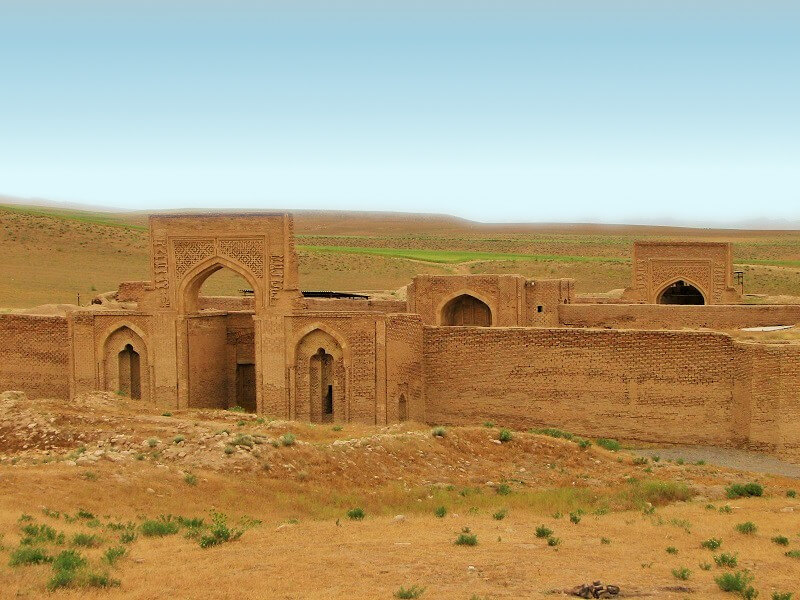
This caravansary, which is located 45 km from the city of Sarakhs, is made in the Razi style with brick and plaster materials. The shape of this Robat is similar to a large fortress from afar and looks like a palace inside.
This building has two courtyards, each courtyard has four eyvans in cruciform plan and a Shabestan. Its brickwork and inscriptions have also a particular attractiveness. Several mosques and altars are seen in this Robat, all of which are decorated with clay and gypsum inscriptions.
The inscriptions mentioned have mostly remained from the Seljuk period. There is a large pond in the middle of Rabat; two stables are located on the southern sides for horses to rest, and some corridors have been built around the yard to accommodate the travelers.
• Robat-e Mahi
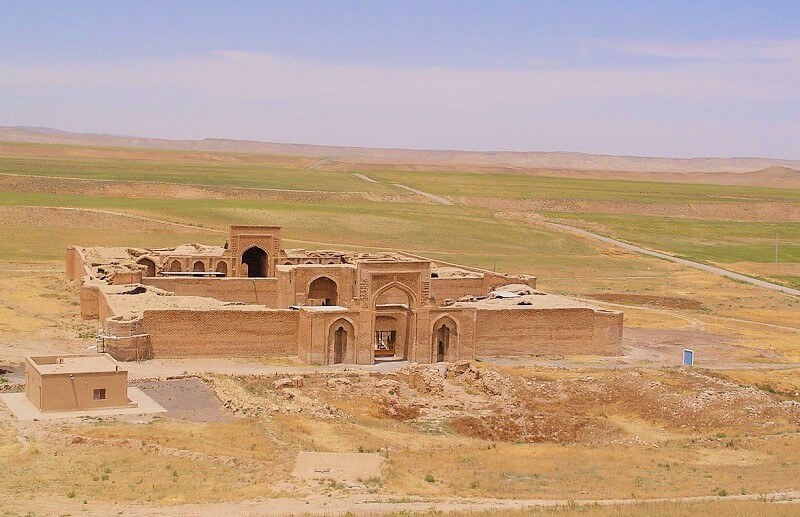
The construction of this building dates back to the late Ghaznavid period (10th and 11th centuries AD). This Robat is located on the Mashhad-Sarakhs road.
• Robat-e Eshgh
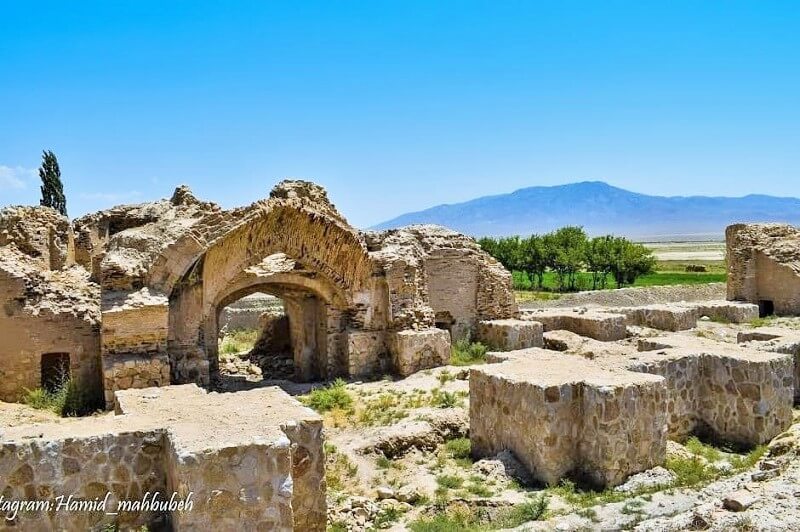
The original construction of this building, which is one of the national monuments of Iran, dates back to the Timurid period. Some constructions have been made in this building later, until the Safavid period. This Robat is located in the city of Jajarm, North Khorasan province.
• Deyre Gachin Caravansary
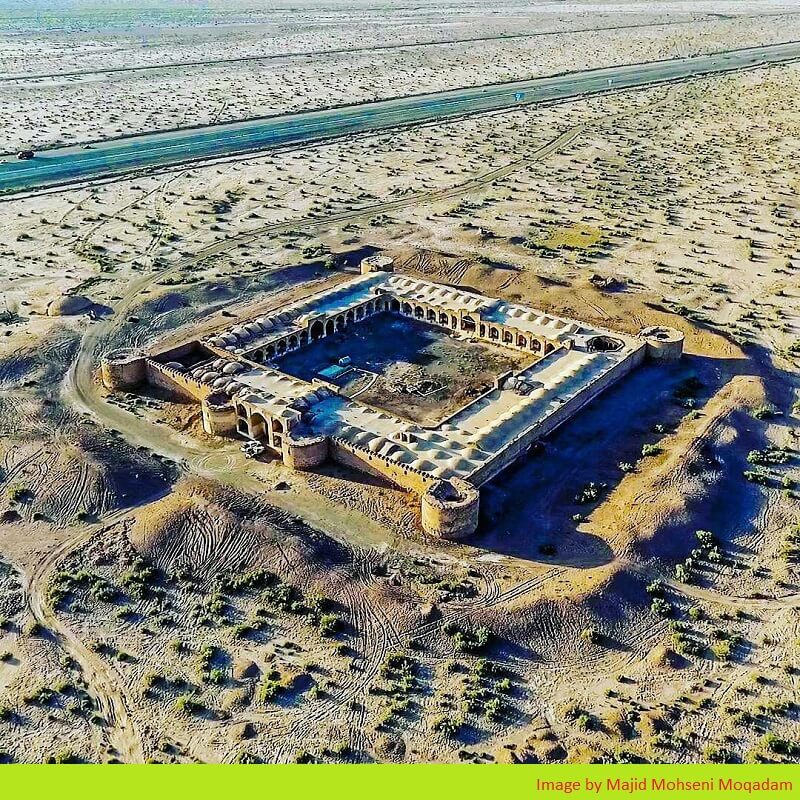
This building is one of the largest caravansaries in Iran and an inspiring symbol of the Persian caravansary. This complex is located on the road from Rey to Qom and in the center of Kavir National Park. The unique characteristics of this work have led to call it the “Mother of Iranian caravansaries”.
The reason for naming this building is the existence of a dome made of gypsum, but such a dome no longer exists in the building today. The construction of this caravansary belongs to the Sassanid period and its frequent reconstructions and repairs have been made during the Seljuk, Safavid, and Qajar eras. Its current form is the result of its last reconstruction during the Safavid period.
• Eynolrashid Caravansary
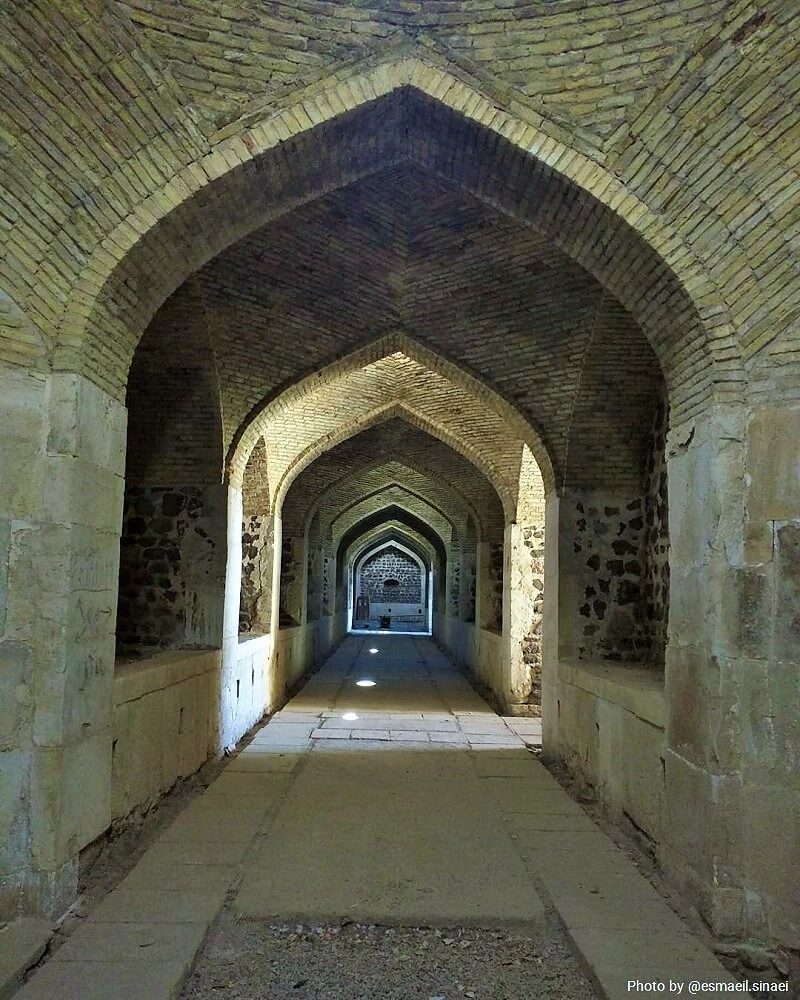
This building is one of the caravansaries of the central desert of Iran (Dasht-e Kavir), which is located 95 km south of the city of Varamin and five kilometers away from the Qasr-e Bahram Caravansary in the Kavir National Park.
This building is more likely related to the Safavid period or has been reconstructed or repaired during this period. On the other hand, Eynolrashid Persian Caravansary is rectangular and symmetrical in form with four iwans, having two gates in the east and west. Its eastern gate is bigger than its western gate. Only the walls of the Eynolrashid Caravansary have remained and its roof has completely collapsed.
The Comparison with Similar Works
We can say that there is no similar example in the world for the Persian caravansary. No example of such caravansaries can be found in Western architecture due to the initial examples of this style of Iranian architecture. On the other hand, few caravansaries are found in Afghanistan, Georgia, and Pakistan. Nothing has been left of these caravansaries nowadays. All of them have been destroyed.
In addition, ancient Greek historians such as Herodotus and Xenophon have reported the existence of safe roads and good caravansaries in Iran. Herodotus wrote about the roads of the Achaemenid Empire: “The unit of measure of roads is Parsang, and a complex has been made every four Parsangs, called the station; good hostels have been established in these complexes”.
This suggests that the Persian Caravansary is an archetype in the world.
The Tourism Value of Caravansaries in Iran
Visiting some examples of the Persian Caravansary can be an attractive and unique experience in understanding Iranian history, art, and architecture. Iranian caravansaries are symbols of climate adaptation. These buildings meet all the needs of travelers and are built using local materials and forces.
In recent years, many of these buildings have been renovated and turned into accommodations for travelers. In most of them, modern facilities such as tap water, air conditioner, and beds have replaced the old facilities to provide comfort and convenience for world travelers from all across the world.






